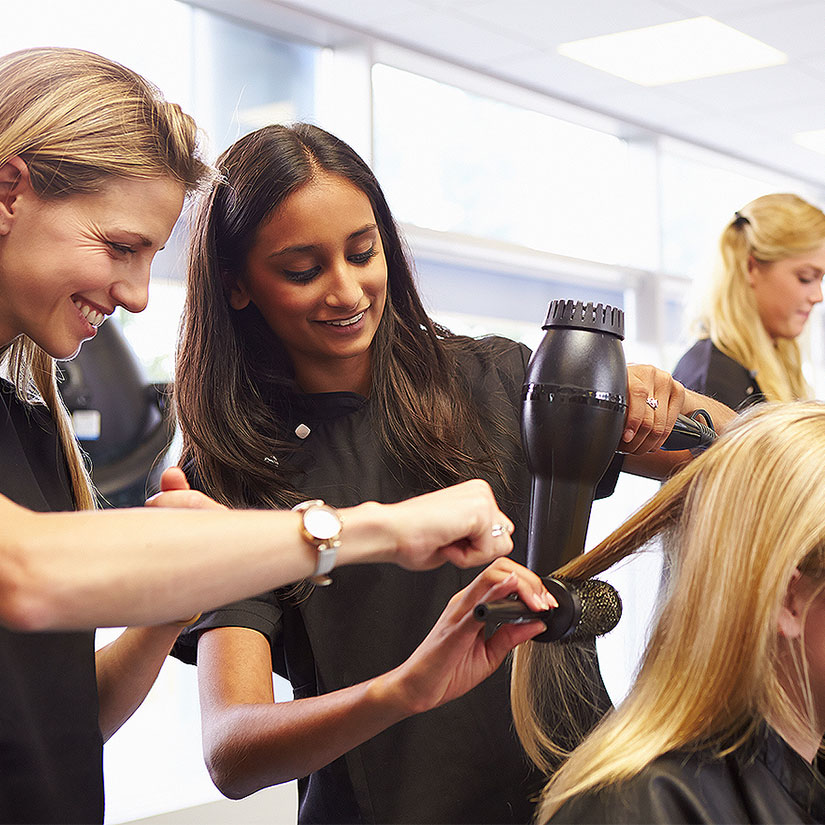There’s no such thing as the “right” way to apply makeup today. Whether you are a beginner trying out cosmetics for the first time, or a professional applying makeup to celebrities on a movie set, there are many different methods to apply makeup. Some artists prefer brushes or sponges, while others opt for the use of an airbrush to add a touch of perfection to a client’s appearance.
Joe Orteza of Tricoci University of Beauty Culture’s Peoria Campus takes airbrushing a step further than traditional makeup. In 2017, he graduated from Tricoci University’s cosmetology program after winning first place in the Chicago NW Barber Battle in the Esthetics category.
Creating the Look
Learning how to use an airbrush as a makeup tool takes a considerable amount of time. Before you can ever put paint onto the brush, you need to learn various techniques to apply a light application, without being too heavy-handed with the airbrush tool.
Once you have your grip handled, mastering airbrushing is a matter of layering while also managing your brush’s pressure levels. To complete a look like Joe Orteza’s, you’d need to:
- Prime your airbrush.
- Prime the model’s skin with moisturizers. Do not apply liquid foundation or anything similar.
- Test your airbrush’s hose to ensure there aren’t any clogs blocking the air hose.
- Establish your foundation by matching the model’s skin tone. Keep the airbrush at least four inches away from the model’s face.
- Apply blush, if applicable. Once again, keep the airbrush a reasonable distance away from the model’s face. Make sure to manage the amount of time you hold the airbrush in one spot, or else you risk making your colors overly dramatic.
- If you are looking for a natural appearance, build up your layers of highlighter and bronzer. Do not use your airbrush to apply lip color or eye shadow; apply these makeups traditionally.
- If you’re looking for a more contemporary or post-modern look, use stencils or freehand work to draft your designs on the model’s face. Build your designs up in layers, carefully allowing time for each of your new layers to dry before applying a new color.
- Once you’ve completed your work, apply any additional makeup, including lipstick, eyeshadow and eyeliner.
- Seal the look with a waterproof sealant.
Note that you will learn the specifics of both basic and advanced airbrushing if you choose to attend Tricoci University. The university’s cosmetology program can guide you through the lessons you’ll need to create a look like Orteza’s.
About the Look
When interviewed, the creator of the look, Joe Orteza, notes that he took inspiration from Japanese anime and steampunk. The influence of steampunk, in particular, finds its way into this look courtesy of the gear stencils that Orteza hand cut. Japanese animes, comparatively, are versatile in their styles; however, new students only have to look to the bright colors Orteza uses to get a sense of his intentions. He references Japanese pop with his dark blues and bright pinks, bringing his look to life in a way that references this form of media and hints at its influence on the world of fashion.
Orteza cites other influences on his work as including:
Products Used
Joe Orteza used the following tools and products to complete this look:
- Dinair Airbrush Makeup
- Joico InstaTint Color
- Redken Triple Take 32 Hairspray
- Badger Airbrush and Compressor
- Handcut Stencils
Airbrushed looks marry a sense of flawless application with an artist’s creativity. If you want to try your hand at a look like Orteza’s, you can reach out to a representative at Tricoci University to discuss the cosmetology program’s admissions process.

